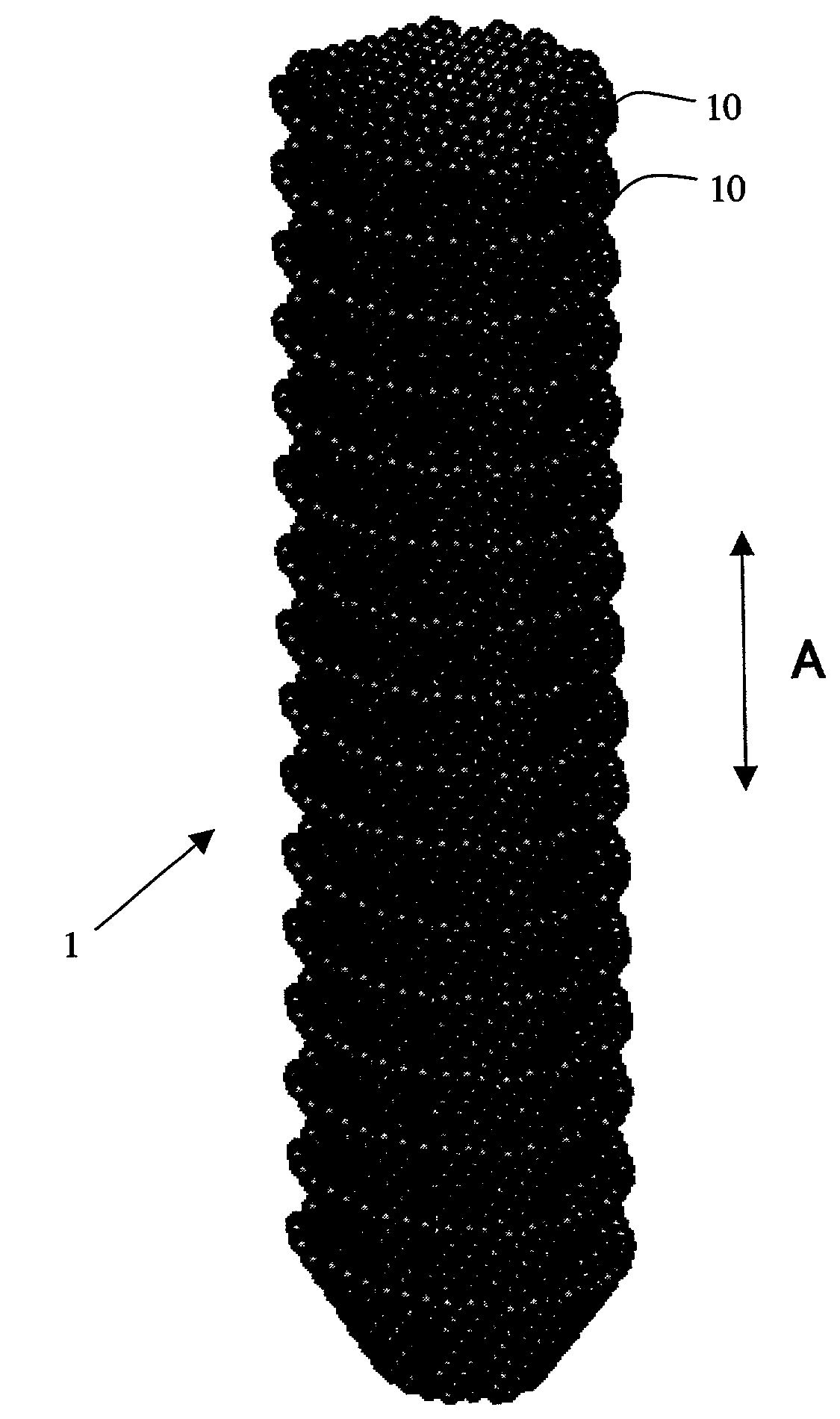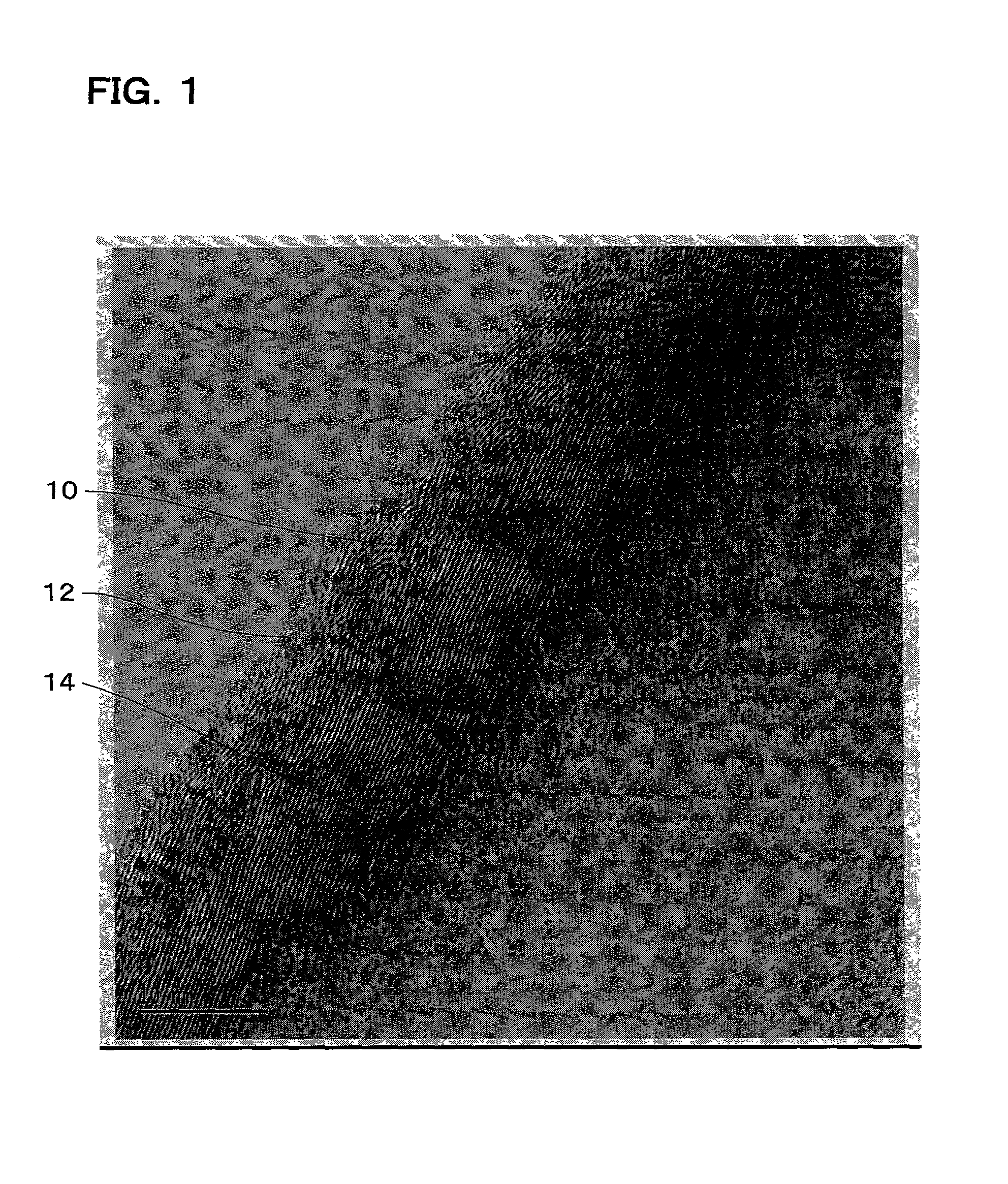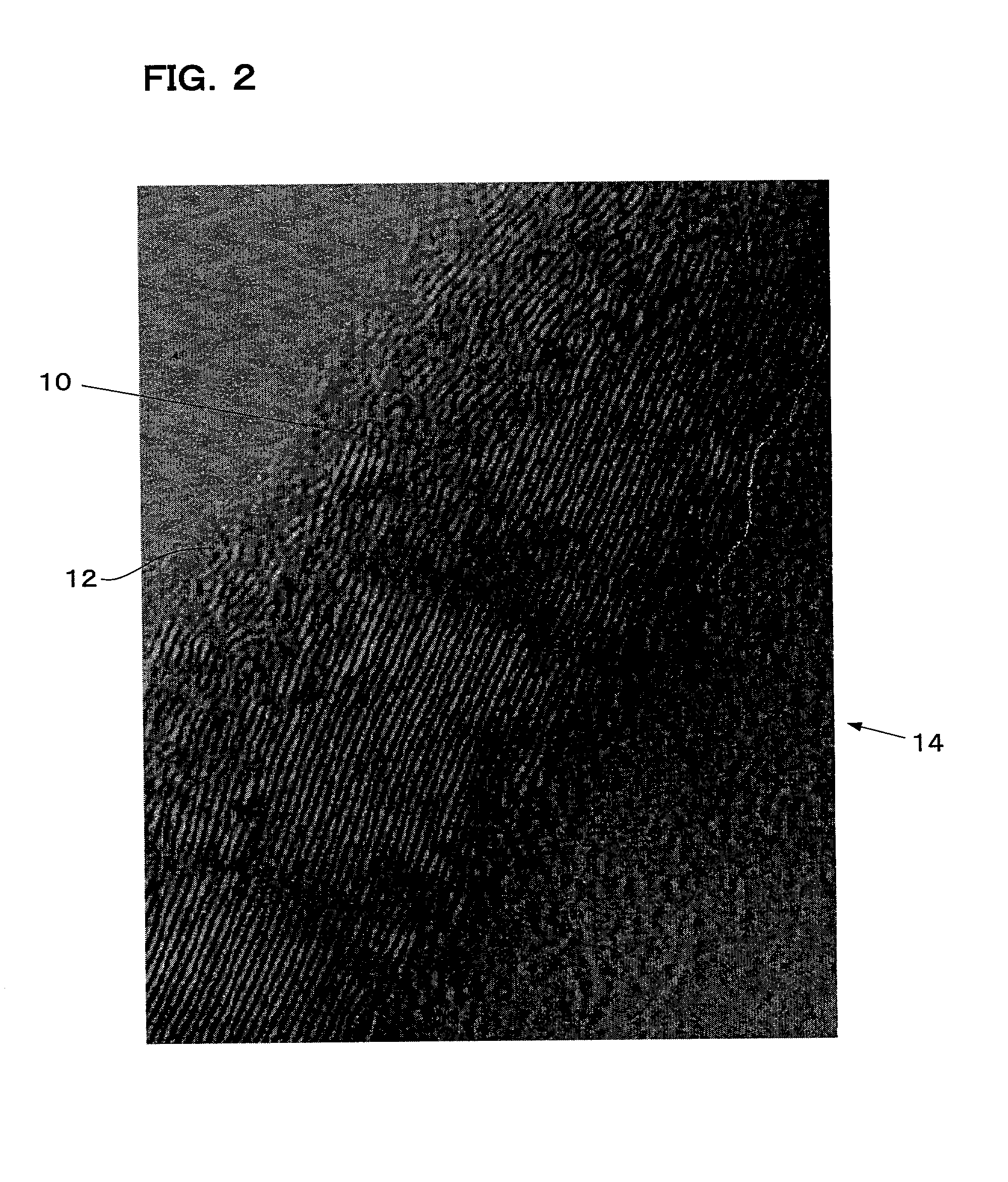Vapor grown carbon fiber and electrode material for battery
a technology of carbon fiber and electrode material, which is applied in the direction of carbonsing rags, cell components, transportation and packaging, etc., can solve the problems of poor adhesion of carbon fiber to resins, and lower activity
- Summary
- Abstract
- Description
- Claims
- Application Information
AI Technical Summary
Benefits of technology
Problems solved by technology
Method used
Image
Examples
Embodiment Construction
[0035]One embodiment of the present invention is described below in detail with reference to the drawings.
[0036]A vapor grown carbon fiber according to the present invention has a structure in which hexagonal carbon layers in the shape of a cup having no bottom are stacked (hereinafter called “carbon fiber having a herring-bone structure”).
[0037]Carbon fibers generally have a structure in which the hexagonal carbon layers are grown concentrically or a structure in which the hexagonal carbon layers are grown in the axial direction. However, depending upon the vapor growth conditions such as catalyst, temperature range, and flow rate, carbon fibers may have a herring-bone structure in which the stacked hexagonal carbon layers are tilted with respect to the fiber axis at a specific angle.
[0038]In an ordinary carbon fiber with a herring-bone structure, a number of hexagonal carbon layers in the shape of a cup having a bottom are stacked. However, the vapor-grown carbon fiber according t...
PUM
| Property | Measurement | Unit |
|---|---|---|
| temperature | aaaaa | aaaaa |
| temperature | aaaaa | aaaaa |
| flow rate | aaaaa | aaaaa |
Abstract
Description
Claims
Application Information
 Login to View More
Login to View More - R&D
- Intellectual Property
- Life Sciences
- Materials
- Tech Scout
- Unparalleled Data Quality
- Higher Quality Content
- 60% Fewer Hallucinations
Browse by: Latest US Patents, China's latest patents, Technical Efficacy Thesaurus, Application Domain, Technology Topic, Popular Technical Reports.
© 2025 PatSnap. All rights reserved.Legal|Privacy policy|Modern Slavery Act Transparency Statement|Sitemap|About US| Contact US: help@patsnap.com



